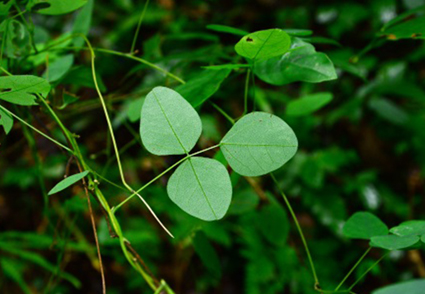Abstract
The phylogenetic relationships between species of the genus Dumasia have been revealed by previous studies. However, some taxonomic problems still remain to be resolved. In this article, we recognize 10 species of Dumasia. We re-circumscribe D. yunnanensis Y. T. Wei & S. K. Lee, promote D. nitida var. kurziana Predeep & M. P. Nayar as a distinct species, and synonymize D. hunanica Y. K. Yang, L. H. Liu & J. K. Wu with D. hirsuta Craib. D. prazeri Predeep & M. P. Nayar is here confirmed as a newly recorded species for China, and D. zhangjiajieensis Y. K. Yang, L. H. Liu & J. K. Wu, a distinct species with winged peduncles which was overlooked in previous studies, is also reported here. We provided detailed descriptions, expanded distributions, habitat and phenological information, conservation status, and taxonomic notes for these five species. An updated key to the genus is also provided.
References
De Candolle, A.P. (1825) Dumasia DC. Annales des Sciences Naturelles (Paris) 4 (13): 96?97.
Ferguson, I.K. & Skvarla, J.J. (1981) The pollen morphology of the subfamily Papilionoideae (Leguminosae). In: Polhill, R.M. & Raven, P.H. (Eds.) Advances in legume systematics, Part 2. Kew Publisher, Royal Botanical Gardens, Kew, pp. 859?896.
Harvey, W.H. (1894) Dumasia DC. In: Harvey, W.H. & Sonder, O.W. (Eds.) Flora Capensis 2. Hodges, Smith & Co., Dublin, pp. 234.
IUCN Standards and Petitions Subcommittee (2019) Guidelines for Using the IUCN Red List Categories and Criteria. Version 14. [https://www.iucnredlist.org/resources/redlistguidelines]
Jiang, K.W., Zhang, R., Zhang, Z.F., Pan, B. & Tian, B. (2020) DNA barcoding and molecular phylogeny of Dumasia (Fabaceae: Phaseoleae) reveals a cryptic lineage. Plant Diversity 42: 376?385. https://doi.org/10.1016/j.pld.2020.07.007
Lackey, J.A. (1981) Tribe 10. Phaseoleae DC. In: Polhill, R.M. & Raven, P.H. (Eds.) Advances in legume systematics, Part 1. Kew Publisher, Royal Botanical Gardens, Kew, pp. 301?327.
Liu, L.H. (2010) Dumasia DC. In: Li, B.G. & Liu, L.H. (Eds.) Flora of Hunan 3. Hunan Science & Technology Press, pp. 795?801.
Meeboonya, R., Ngernsaengsaruay, C., Balslev, H. & Chayamarit, K. (2019) The genus Dumasia (Fabaceae) in Thailand. Thai Forest Bulletin Botany 47: 113?120. https://doi.org/10.20531/tfb.2019.47.1.15
Pan, B. & Zhu, X.Y. (2010) Taxonomic revision of Dumasia (Fabaceae, Papilionoideae). Annales Botanici Fennici 47: 241?256. https://doi.org/10.5735/085.047.0401
Pradeep, S.V. & Nayar, M.P. (1990) A new species of Dumasia DC. (Leguminosae) from Burma. Journal of Japanese Botany 65: 109?111.
Pradeep, S.V. & Nayar, M.P. (1991) Novelties in the genus Dumasia DC. (Leguminosae-Papilionoideae). Journal of Japanese Botany 66: 275?279.
Sa, R. & Gilbert, M.G. (2010) Dumasia DC. In: Wu, Z.Y., Raven, P.H. & Hong, D.Y. (Eds.) Flora of China 10. Science Press, Beijing and Missouri Botanical Garden Press, St Louis, pp. 242?244.
Siebold, P.F. & Zuccarini, J.G. (1845) Florae Japonicae familiae naturales: adjectis generum et specirum exemplis selectis. Sectio prima. Plantae dicotyledoneae polyprtalae. Abhandlungen der Mathem.-Physikalischen Klasse der Königlich Bayerischen Akademie der Wissenschaften 4 (2): 109–204. https://doi.org/10.5962/bhl.title.10718
Wei, Y.T. (1995) Dumasia DC. In: Lee, S.K. (Ed.) Flora Reipublicae Popularis Sinicae 41. Science Press, Beijing, 247?256.
Wei, Y.T. & Lee, S.K. (1985) New material for Chinese Leguminosae. Guihaia 5 (3): 157–174.
Yang, Y.K., Liu, L.H., Wu, J.K., Wu, P.L. & Yu, J.J. (2004) New Taxa of the family Leguminosae from China (1). The Chinese Academic Medical Magazine of Organisms 3: 62–76.


